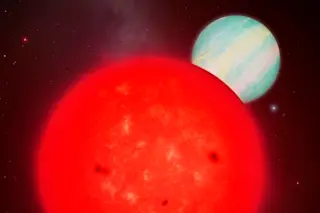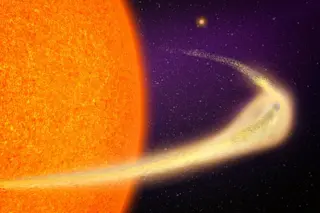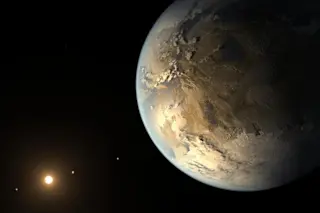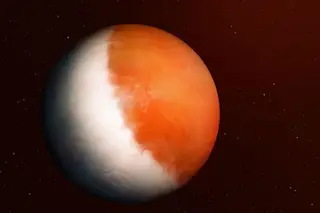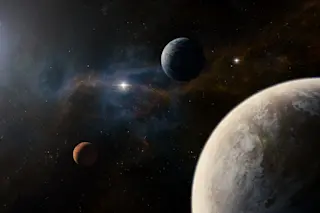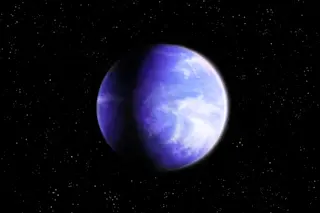This artist's concept depicts in the foreground planet Kepler-62f, a super-Earth-size planet in the habitable zone of its star which is seen peeking out from behind the right edge of the planet. The small shining object farther to the right is Kepler-62e which orbits on the inner edge of the habitable zone of the star. Credit: NASA/Ames/JPL-Caltech. Exoplanets have found a permanent place in the public imagination, probably because of the possibility of finding an Earth twin: a planet where life as we know it (either extraterrestrial or, eventually, our own) could survive. While we’re not there, yet, a NASA press conference today suggests we’ve come closer to this goal: the first known planets that could plausibly support life. A nearby star named Kepler-62 turns out to harbor five worlds, two of which are the smallest exoplanets known to orbiting within their star’s habitable zone. This means temperatures on them ...
Potentially Habitable Exoplanets Found Orbiting Nearby Star
Discover the habitable zone exoplanets Kepler-62e and Kepler-62f, promising candidates for extraterrestrial life in our galaxy.
More on Discover
Stay Curious
SubscribeTo The Magazine
Save up to 40% off the cover price when you subscribe to Discover magazine.
Subscribe



